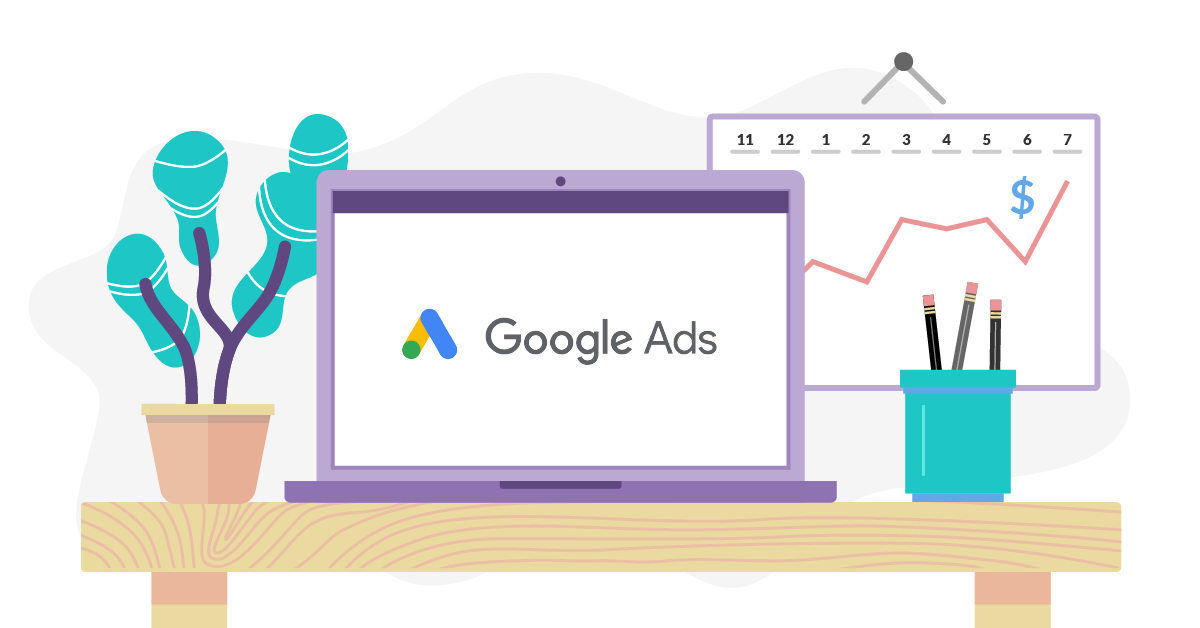Every business needs customers & you want people to become your customers, right?
Well, surely you do.
You have a lot of things to take care of such as paying your bills, mouths to feed, former paramours to impress.
Well, feel yourself lucky cause you have come to the right place. Although, I will not be so pushy that you need to claim Google ads, but somehow, I will be as it is a great investment & it seems that every 1 in 4 of you still needs more convincing!
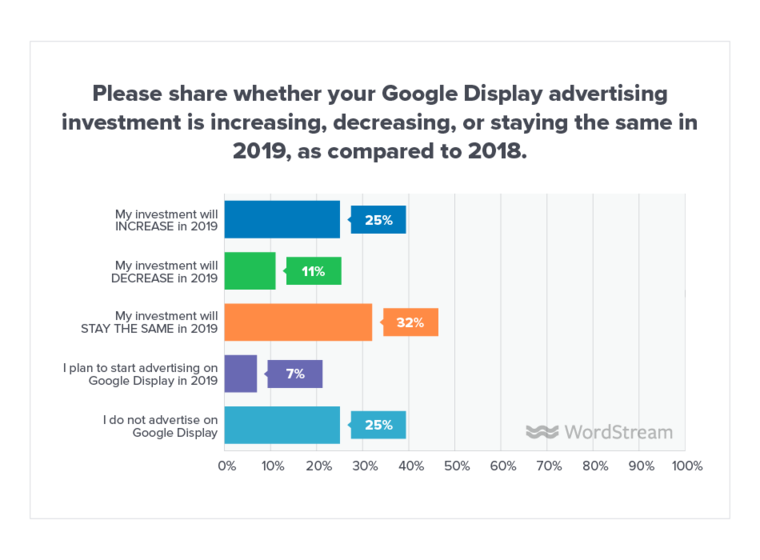
What is so great about Google display advertising?
Well, it really helps you to do two things by which you can win new customers:
1. Building a valuable, recognizable brand, &
2. Keeping that brand at the top of your prospects’ minds.
Sounds great, right?
Let’s dive in, then.
By the end of this Google display advertising cheat sheet, you will know a lot more about:
- The value of display advertising
- Google display ad specs (including display ad types and sizes)
- Google display ad costs
- Google display targeting parameters
- How to set up Google display ads
Let’s learn more about it!
What is a Google display ad?
You might have not heard about the “display ad” but you must be familiar with display ads themselves. They are the common ads you see while reading an article on your favorite blog, watching a video on YouTube, or using a mobile app.
Google display ads are showed on the Google Display Network. It is a network of over two million websites & apps that reaches about 90% of internet users.
So, you definitely have the power to introduce your brand to tons of relevant consumers. But, you are also liable to introduce your brand to tons of irrelevant consumers. Simply, It means that Display ads can cost you a huge amount of money if you are not careful.
We will discuss about the steps you can take to save your money.
The case for display ads
Before we start discussing about display advertising, let’s have an overview.
The Search Network enables the advertisers to buy promotional real estate which is also the major Google Ads Network. Generally, it is a valuable channel for marketers as it allows them to boost people to use Google.
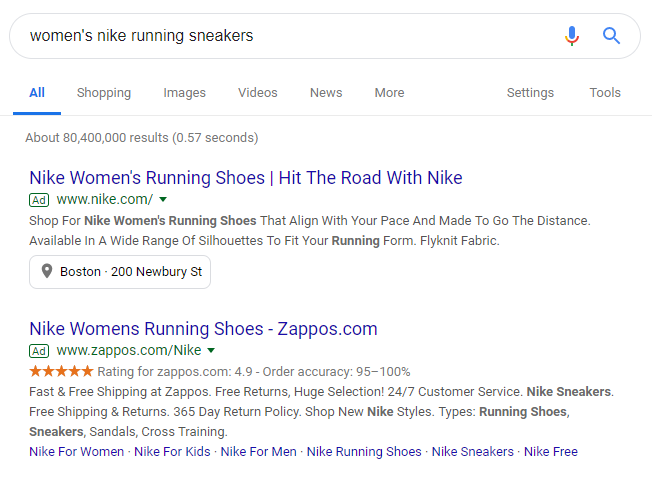
People are shown display ads while they are consuming content & not while they are looking for solutions. See it like this that the commercial intent that makes search advertising so valuable does not exist on the display network.
As different marketers answer this question differently so why should we bother with display ads. However, we are confident that there are some reasons that can bring us all on one page.
Let’s talk about branding first.
Considering that you & your competitors are going after the same prospects so, you definitely have to find new ways to make yourself better & to separate your business from them.
Let’s think about it visually, the display advertising is an opportunity to establish your brand in your prospects’ minds.
Whereas, the second is more practical.
We know that a prospect will not become your customer as soon as they see your product or service advertised on the search network. Even if they click on your add, they will, most probably, leave your website without taking any form of action & simply move onto another task.
Now, the challenge is, how will you get them back to your website?
With display ads, Of course! You can keep your business at the top of your prospects’ minds.
Finally, we can get into the details now.
Google Display ad types
There are two types of Google display ads: uploaded & responsive.
The uploaded ad has the responsibility of creation & optimization on you. Whereas, responsive ad passes the reins to Google Ads.
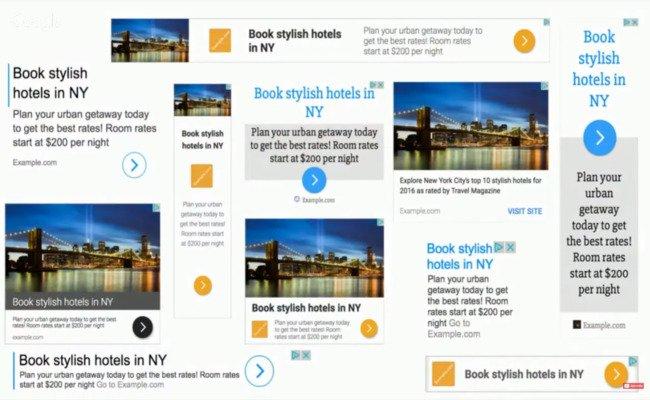
Remember, that every web page is different. Even if your ad is perfect for a specific position, it will not be displayed if it does not meet the size specifications for the page. Therefore, you have to create different sizes for each ad.
Moreover, if you have the design resources to create your own display ads from beginning then take the uploaded files like JPG, PNG & GIF as these files are all supported.
Google introduced responsive ads a few years back. In fact, the default display advertiser in summer, 2018 was the responsive ad type.
But, how do you do it?
The process is very easy. All you have to do is to simply upload your business’ name & logo along with some visual assets & some basic ad copy.
Then, Google ads will test different combinations of visuals & copy to find out which versions of your ad perform the best & the best thing about responsive display ads is that it adjusts according to the size required by the web pages.
Still are looking for more options?
Don’t worry! We will discuss three ad creation tool at the end of the guide.
Google display ad sizes
You can skip to the next section, if you are planning to run only on responsive ads. On the other hand, If you have a plan to take the uploaded route & maintain control over your ads, there are 12 common sizes that you will need to accommodate:
- Mobile: 300×250, 320×50, 320×100, 250×250, 200×200
- Desktop: 300×250, 336×280, 728×90, 300×600, 160×600, 970×90, 468×60
Google display ad costs
The Google display network runs on a Live Auction System same as the Google search network. You will enter into an auction with the other advertisers who are eligible for the same unit.
For instance, let’s assume you & your competitors are bidding on a cost per click (CPC) basis & competing for real estate on a standard blog page.
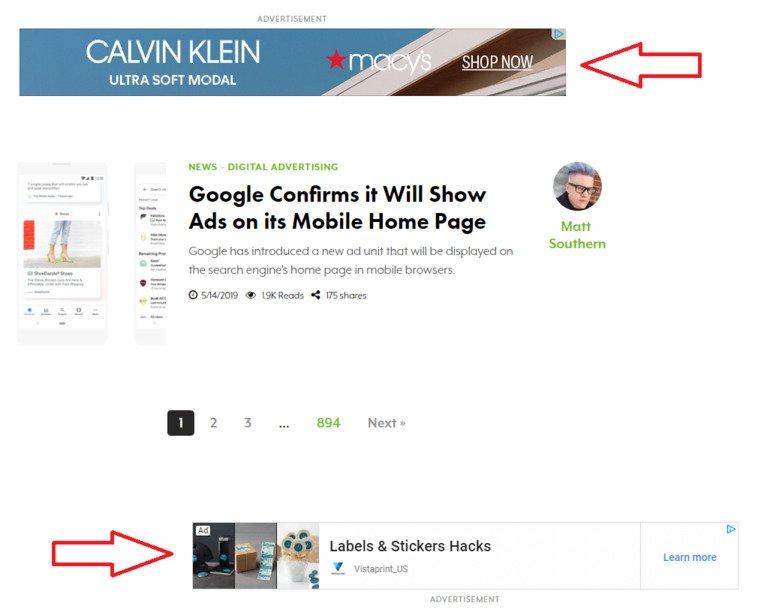
By using auction, Google tells each advertiser who lands on the page & how much they paid for a click.
Your position of the ad & CPC is dependent on your Ad Rank. It depends on the maximum amount of money you are ready to pay for a click on your ad. It is mainly a measure of how relevant your ad is to the people you are targeting.
Your actual CPC is the outcome of auction. However, this is less than your maximum CPC bid. For incremental clicks, when everything is finalized, all you have to do is to pay the minimum amount required to surpass the advertiser.
An Incremental Click is a click that you would not be able to use if you were in a lower ad position. For example, the first ad may get five clicks while the second ad may get only three clicks.
In contrast, amongst the two ads, five clicks are considered to be incremental. The CPC for those two clicks is enough to surpass the next advertiser.
However, the CPC is equal for the remaining three clicks which the next advertiser is paying for their clicks.
There are a lot of clicks you drive will be priced as if you are in the lower position even if you win the best ad position on the page. The clicks you use are a little expensive as your add is more visible.
According to WordStream data, the average CPC on the Google display network is $0.63. In contrast, the average CPC on the search network is $2.69 which means it is more than four times greater. This is due to search network clicks that are generally more valuable, as discussed earlier.
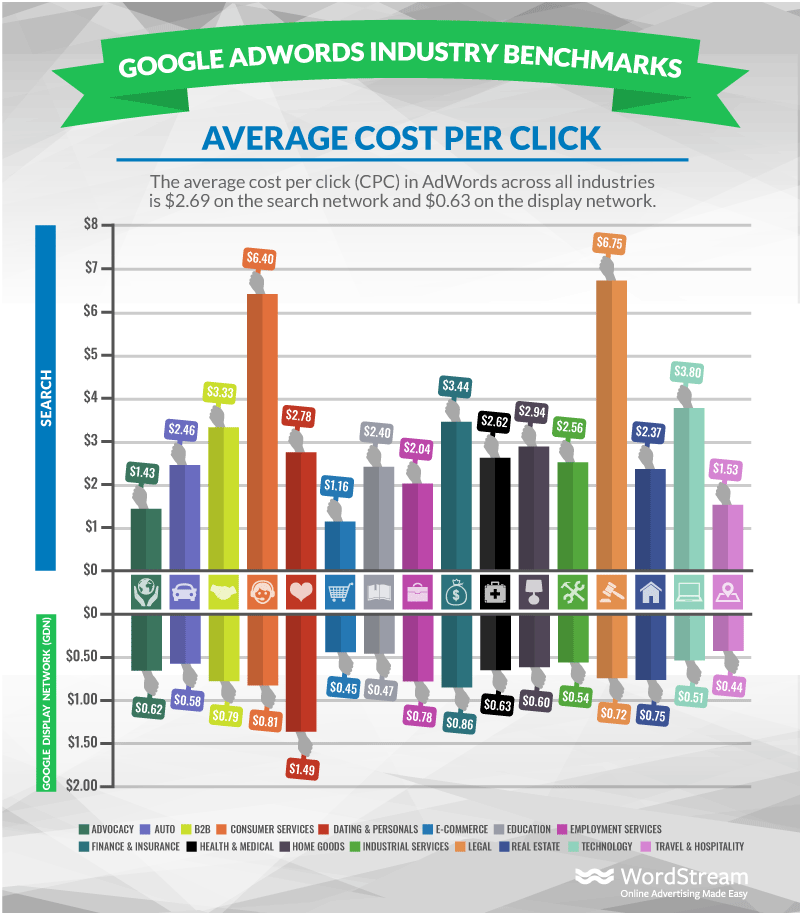
Google Display ad Targeting
Now, it is finally time to discuss the steps you can take to avoid wasting your display advertising budget.
The key to spend your display budget is by layering your targeting parameters to yield the most relevant impressions & clicks possible.
This makes us think that what targeting parameters do you have at your disposal?
There are two types of targeting parameters at the group level: People & context. People category enables you to advertise to specific groups of people whereas, Context category enables you to advertise within certain types of content.
Let’s discuss each of them.
People Targeting for Display Ads
There are two subcategories: demographics & audiences.
Demographic targeting allows you to display your ads to a certain group of people based on their characteristics like age, gender & parental status.
Whereas, audience targeting is based on interests & behaviors. Furthermore, this divides into two more subcategories.
An Affinity Audience is defined as a group of people who share a common interest such as sports fans, travelers & foodies. You can create your own custom affinity audiences, if you think that Google Ads’ options are too general.
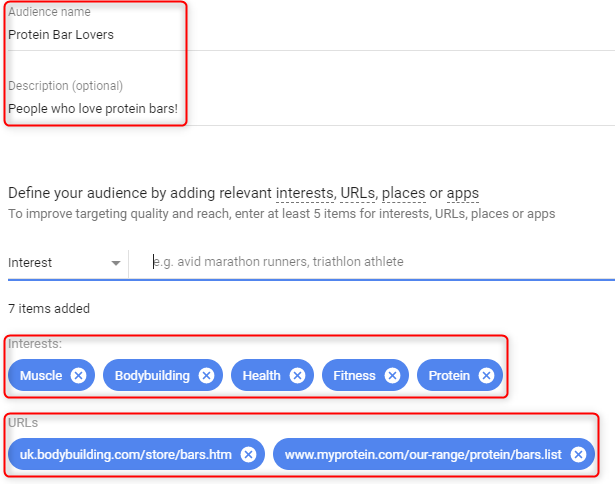
An in-market audience is a group of people who are looking to buy a specific product or service. These audiences enable you to keep your business at the top of the minds of consumers.
Whereas, a remarketing audience, is a group of people who have interacted with your business in one way or another. As we have discussed earlier that a key part to display advertising is the ability to re-engage your prospects.
Contextual Targeting for Display Ads
Contextual targeting has two subcategories: keywords & topics.
Keyword targeting helps you to show your display ads within content that relates to a specific keyword. For instance, if you are advertising running gear, you can target keywords like “running sneakers” & “running wristwatch”.
Whereas, Topic targeting helps you to show your display ads within content that relates to a specific topic. For instance, if you’re advertising an upcoming music festival, you can target topics like “music” & “live entertainment”.
More importantly, Google Ads allow you to omit specific topics as well. Topic exclusions are used to keep your brand away from irrelevant or inappropriate content.
Let’s say if you were advertising a violent video game, you would not want to show your display ads on websites that publish educational content for young kids.
How to set up a Google Display & Campaign
5 Google display ad best practices
As, we have already talked about all the technical details of display advertising. Now, let’s see what are some of the best practices you can use to maximize your returns.
1. Tap into your Top Performing Search Keywords
A great way to introduce your business to relevant audiences is through keyword targeting. If you are uncertain of where to start then, we recommend you to use your top-performing search keywords at the beginning.
Even though, the definition of “top-performing” is up to you but, if there is a handful of keywords that tend to drive low-cost clicks or conversions on the search network then, you should really try them out on display network.
The consumer intent on the two networks is completely different. On the other hand, you know that clicks & conversions show that your search ads are resonating so you can feel confident that the winners behind them are the keywords.
2. Use bid adjustments
You will have enough data to keep a check on keywords which are doing well & which custom affinity audiences are not & so on. Whereas, you can set Bid Adjustments either at the ad group or campaign level which allows you to turn judgements into strategy.
You can tell Google ads to increase your maximum CPC bid whenever one of the ad in the group can be seen. This is when you set a positive bid on a given ad group.
Alternatively, you can tell Google ads to decrease your maximum CPC bids when you set a negative bid adjustment. Bid adjustment is an amazing way to gain your top performers & to lose your poor performers.
3. Look at your referral traffic
You can find a lot of useful information in Google Analytics. The traffic report is highly valuable for display advertisers.
You can find out which websites link to yours the most by the traffic reports or let’s say it informs you, which websites you can use to cater people that can benefit your product or service.
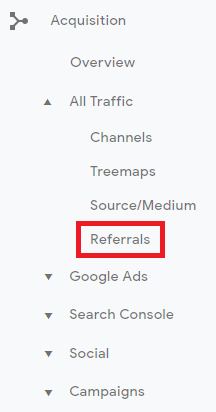
As you know that you are reaching out to the relevant audiences. So, these websites are perfect to show you display ads.
4.Emphasize your value proposition
You have to emphasize your value proposition as your prospects. They can easily scroll pass your ads without even noticing them.
Instead of missing opportunities as well as money & bidding on a cost per thousand impressions. It is difficult to say that your display ads attains your prospects’ attention.
The visual aesthetics of your ads such as color scheme & typography etc. play an important role. Whereas, the value proposition does not play an important part as compared to the visual aesthetics. Your value proposition is a benefit that someone will make use of after becoming your customer.
For instance, if you are advertising a pair of men’s boots, then your value proposition maybe increased when someone will feel confident that he is looking good.
No matter what your value proposition is, make it extremely noticeable.
5. Focus on headlines when writing RSAs
When creating a responsive display ad, you will have to write four pieces of copy:
- A short headline (25 characters)
- A long headline (90 characters)
- A description (90 characters)
- Your Business Name (25 characters)
There are two key things you need to know:
- Google Ads will never run both at the same time
- Google Ads will sometimes exclude your description. Regardless of which headline is selected for a particular iteration of your RSA, there is no guarantee it will be accompanied by your description.
The takeaway: Make sure your headlines are enough on their own. Both should communicate the unique value of your business or the offer you’re making.
5 amazing Google display ad examples
Every cheat sheet needs a little inspiration. Let’s sum it up with five examples of amazing Google display ads.
We will make sure to break down it in such a way that will make you walk away with immediate actionable tips.

Let’s take the courtesy of CheapCaribbean.com as our first example. It is a travel agency that helps people to book vacations in the Caribbean. As far as I can tell about this travel blog, I got impressed by its effectiveness immediately.
In addition, the images are simply perfect. Considering that the goal of this ad is to convince me to get back on Google & continue searching for a luxurious Caribbean destination.
Moreover, the company makes amazing use of the ad copy by highlighting the affordable prices of their offerings. They are sending a strong message like When we say cheap, we mean it.
Every cheat sheet needs a little inspiration. Let’s sum it up with five examples of amazing Google display ads.
We will make sure to break down it in such a way that will make you walk away with immediate actionable tips.
2. ClickCease taps into the power of fear

While I was reading a Search Engine Journal article, I saw this display ad of ClickCease. The use of fear to both grab my attention & communicate the value of the product they are selling. Fear is an arresting, persuasive emotion because no PPC marketer wants to fall victim to click fraud, this is an ad that is certain to leave an impression.
One small drawback: This ad needs a brand name. Although it is effective, but it is not as trustworthy as it needs to be to meet its full potential.
3. Wikibuy makes an undeniable value proposition

Wikibuy is an online shopping assistant that finds out the best deals for you. While I was looking at the news, it hit me with the wonderful little display ad.
What is the key to strength?
Well, it is simplicity. Which means that it is an absolutely simply ad with an absolutely simple value proposition such as Stuff is cheaper when you buy it from us.
People who are in highly competitive markets should definitely take notes!
4. Alteryx nails it with their Headline (and their offer)

To start off with, just look at that Headline.
Adding a little aspirational sentiment into your ad copy won’t hurt anyone. Right?
So, take a look at the sub-heading next!
This is exactly what all marketers need & to put the cherry on the cake, they have also offered an e-book that will get you straight to their funnel.
5. LinkedIn makes it personal

Well, this sums up the Google ads cheat sheet from Linkedln. One thing that makes this ad the best, is its personalization.
This ad gained my attention when I saw it on the homepage of EZgif (an essential tool for all my fellow marketers) as I’m a B2B marketer.
Linkedln & ClickCease are doing the same thing that is creating fear. They are creating a FOMO which mean fear of missing out as there is no marketer who wants to be a late adopter.
3 easy, free tools for creating Google display ads
Although, we love display advertising but we have noticed an obvious problem with it: It is not as accessible as it is powerful. There are a lot of businesses that do not have the resources like time, money, designers & effective display ads.
On the other hand, there are a lot of free tools on the market that allow you to easily create your own Google display ads. Some of our favorites are listed below:
- Smart Ads Creator: All you have to do is enter a website or page URL & we will turn your best visual assets into beautiful display ads in a few minutes.
- Bannersnack: Drag-and-drop all kinds of free fonts, stock photos, & animations to create high-quality visuals that work on all platforms.
- Canva: Browse thousands of free, flexible banner ad templates & customize them to match your brand aesthetic.


